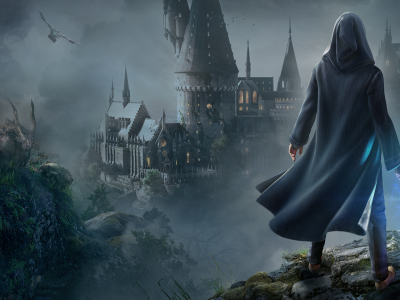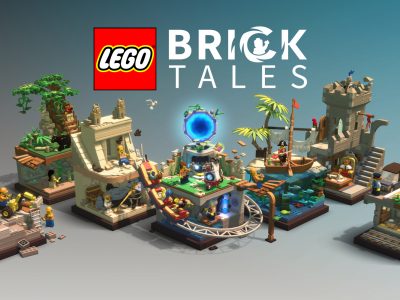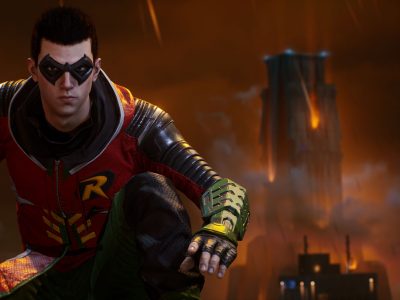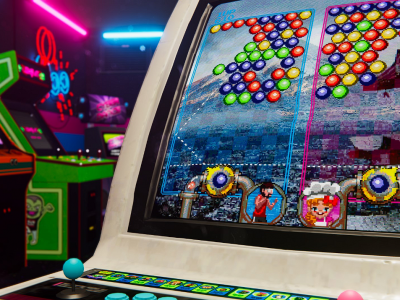Rogue-likes are quickly becoming a saturated genre, full to the brim with variations on the dungeon-crawling, permadeath, persistent upgrade sub-genre, but that hasn’t stopped developer Passtech taking their own stab at it, and fortunately, it’s critical hit. Indeed, Curse of the Dead Gods is a terrific game.
On the surface Curse of the Dead Gods appears unremarkable. It’s very much structured as you would expect for the genre, offering randomly generated dungeons to explore, full of nasty creatures, alluring loot, temporary upgrade paths, and a powerful boss that threatens to end your run in disgrace and failure. However, it soon becomes apparent just how polished the experience is.
You control the adventurer Sir Caradog McCallister, equipped initially with a pistol and whip, as well as an overwhelming need to uncover and possess the treasures buried deep in the ruins of a long dead civilisation. This, however, leads to a curse where the God of Death punishes your greed by making it so you can’t truly die, and instead must explore the labyrinthine, and ever changing ruins.

You’re not alone in the dark, foreboding ruins. Enemies lurk in the shadows and mean to harm you should you get too close, and the only way to lift this curse and escape these ruins is to fight through and defeat the three temples – Jaguar, Eagle, and Serpent – each with their own unique design and enemies.
Indeed, combat is the primary mechanic, and it’s incredibly tight and responsive. You’re initially equipped with two weapons that typically offer a different method of attack, such as one for ranged and the other for melee. Additionally, a third, more powerful weapon can be discovered during a run that offers a strong attack at the cost of a longer windup. Using these weapons, swapping out new weapons as you come across them, and then upgrading your weapons throughout a run, affords you interesting options in customising the combat, and with each weapon feeling very different from one another, it adds wonderful variation to the brawls depending on what weapons you manage to find.
Learning how to use each weapon, and learning how to read your enemies attacks, is initially a punishing trail and error affair, as to be expected from the genre, however, stringing together combos attacks and finally understanding an enemy’s tells, makes the combat a thrilling and skilful dance, one made all the more interesting by the environment.

Managing how many enemies you engage, and your space, is important when trying to quell the chaos; go in too boisterous and you risk being overwhelmed. Furthermore, environmental traps, explosive barrels, and the darkness add to the chaos. You’ll have equipped a torch to help guide you, but with your weapon drawn you’ll have to stow it, and the darkness can make spotting enemies and traps tricky. Fires can be lit to aid you, as long as enemies don’t dowse the flames, and some weapons give off their own light, but manging all these factors turns the hectic combat into mindful strategy, and it’s brilliant.
Death is inevitable, it simply comes with the genre, so the permanent upgrades you can purchase with the loot you uncover during a run are crucial to your future success. This includes passive buffs to your stats, but also starting weapon options and enhancements to those weapons, allowing you to build the kind of character that fits your playstyle, as well as slowly upgrade your character to better survive the many enemies and traps. It’s a fairly slow process, but your skill in combat is also an important factor when it comes to your survival, so progress is made in the early game as you figure out the mechanics.
The three temples you need to conquer are separated into three stages of increasing difficulty, and each run through a temple stage see you pick branching paths on the dungeon map between rooms. Many of these rooms are marked with what kind of loot you can discover, allowing you to choose a path that best suits your needs, whether that’s to increase your gold, discover new weapons, heal, discover stat increasing artefacts and attributes, or even unknown rooms that could offer any of the above. Sure, sometimes the random nature of these dungeons can limit your options, but there’s always an interesting decision to make on how to proceed.

Upgrading your weapons, artefacts or attributes is done via fountains, using either gold or blood. If you can afford it with coin then the transaction is fairly standard, however, with blood sacrifices you add to your Corruption meter. At certain thresholds, this Corruption manifests as specific Curses, offering all manner of ailments that effect your stats, your equipment or the environment, adding further challenge and tactical considerations. Using the healing rooms also causes an increase in Corruption – but also health – and even moving between rooms adds to your Corruption. It adds up and inflicts multiple curses on you over the course of a run. Luck plays a big part is how debilitating these curses can be, but there’s also room enough for you to strategically consider your restrictions and tackle the dungeon in a different way. Perhaps it’s best to take a quicker route to the end to reduce the overall Corruption you earn, or perhaps skipping that upgrade is worth considering. It’s all very cleverly designed to force you to make tough decisions.
Of course, with the random Curses, rooms, enemy encounters and high skill level required to make progress, it can get frustrating, but fortunately progressing your character’s stats and weapons isn’t the only drive. As you complete runs, you’ll gradually fill in a journal, which reveals more of the lore surrounding your character, Sir Caradog McCallister, and the dungeons and enemies you’re encountering. There are also a series of quests linked to the journal that unlocks more lore when you complete them, giving you a good sense of purpose even when progression is slow.

Curse of the Dead Gods is a tough Rogue-like but a compelling one. The combat is excellent, with smart weapon options that suit a myriad playstyles, the enemies are deadly but can be conquered with a little study and experience, and the trap-filled dungeons are attractive yet eerie with their three distinct styles, cell-shading, and wonderful use of light and darkness. It can get frustrating when the RNG (Random Number Generation) is against you, especially with the Curses, but it’s extremely satisfying to finally conquer a dungeon and its boss despite this.
Curse of the Dead Gods
Rogue-like are pretty common nowadays, but Curse of the Dead Gods is a smartly designed game that feels extremely polished, is full of smart options for interesting decisions in how you progress, and looks terrific. It's pretty tough though.
PROS
- Tight, responsive combat
- Always interesting decisions to be made about progression
- clever use of environmental traps and lighting
CONS
- Tough
- Genre specific RNG can be frustrating
- only three location styles










